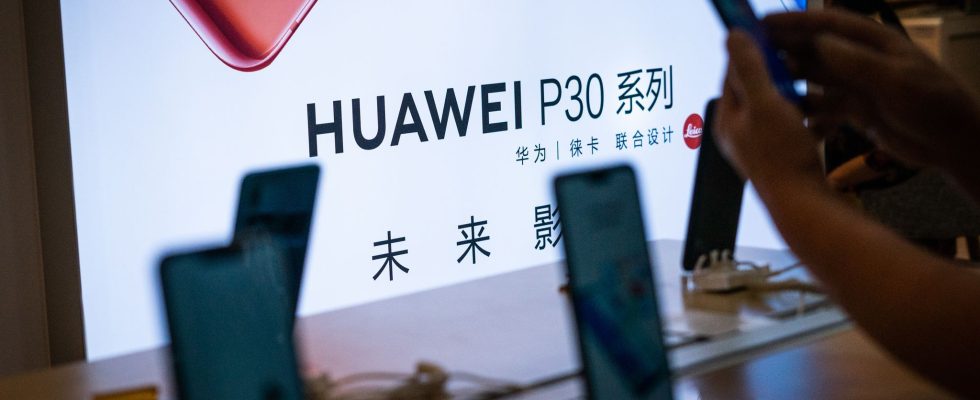Some news from the front. Not that of the Russo-Ukrainian war, but that of the Sino-American trade war. The decoupling strategy launched by Trump, and reinforced by Biden, results in real destruction, but the globalized economy is stubborn, as the Huawei case shows. At the end of April 2018, the Department of Justice opened an investigation into Huawei to determine whether the Shenzhen group, No. 3 in the world in the smartphone sector, had violated American sanctions against Iran by selling its products to the Islamic Republic. This investigation was followed by a presidential decree prohibiting it from selling its telecom network equipment and purchasing from American manufacturers. As a result, its products, which had become incompatible with Alphabet’s mobile operating system, Android, had disappeared from shelves outside China, its market share plummeting from 18 to 4%.
Last March, the company announced that it had emerged from the crisis after recording a slight increase in its annual turnover in 2022. As a symbol, the results were presented by Meng Wanzhou, financial director and daughter of founder Ren Zhengfei , which was held for three years in Canada in connection with sales to Iran. To cope with the sanctions, the company has increased its R&D spending, which now reaches a quarter of its turnover. Such spending has helped Huawei replace components in its products affected by U.S. trade sanctions, with Ren Zhengfei citing substitution of nearly 13,000 parts.
The company has become the spearhead of China’s quest for independence in semiconductors. As evidenced by the recent launch of its latest smartphone, the Mate 60 Pro. The device likely contains a 7-nanometer 5G chip manufactured by Smic (Semiconductor Manufacturing International Corporation). Its release coincided with US Commerce Secretary Gina Raimondo’s visit to Beijing, making it a powerful geopolitical statement. Huawei is even studying how to compete with Nvidia and its famous A100 class chips, banned for export to China.
Biden’s Maginot Line
HiSilicon, Huawei’s design company, had already shown, even before the sanctions, its desire to compete with Apple or Qualcomm. Most of the other components are Chinese, with the exception of a few memory cards from South Korean SK Hynix. The question that many experts are now asking is that of Huawei’s ability to continue on this autonomous path. The company would be obliged to give guarantees to the Chinese state to continue to obtain the subsidies which would open the way to 5 nanometer chips. The Biden administration had tried to build a Maginot line by forcing the Dutch, Germans and Japanese to stop exporting their most cutting-edge semiconductor production machines, extreme ultraviolet (EUV) lithography, to China. . But the Chinese managed to hijack European deep ultraviolet (DUV) lithography machines.
It is likely that the next US president will tighten export licensing to prohibit servicing machines already installed in China. It would be a big blow. The Chinese manufacturing industry for these machines is in its infancy. Krypton fluoride laser technology from Shanghai Micro Electronics Equipment (SMEE), China’s answer to Dutch ASML, is twenty years old.
Such an act would be a further escalation in the trade war. And the consequences could be serious for American semiconductor suppliers like Qualcomm, Texas Instruments, Western Digital, NXP or Qorvo, all very exposed to China. Apple, which is struggling to escape its dependence on Chinese factories for the iPhone, also risks paying the price for other products: the Californian firm is currently testing advanced screens manufactured by two local suppliers, BOE Technology and SeeYA Technology , with a view to possible inclusion in its future Vision Pro mixed reality headsets.
* Robin Rivaton is Managing Director of Stonal and member of the Scientific Council of the Foundation for Political Innovation (Fondapol).
